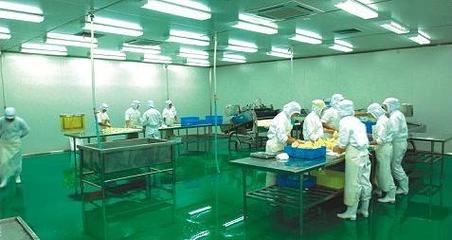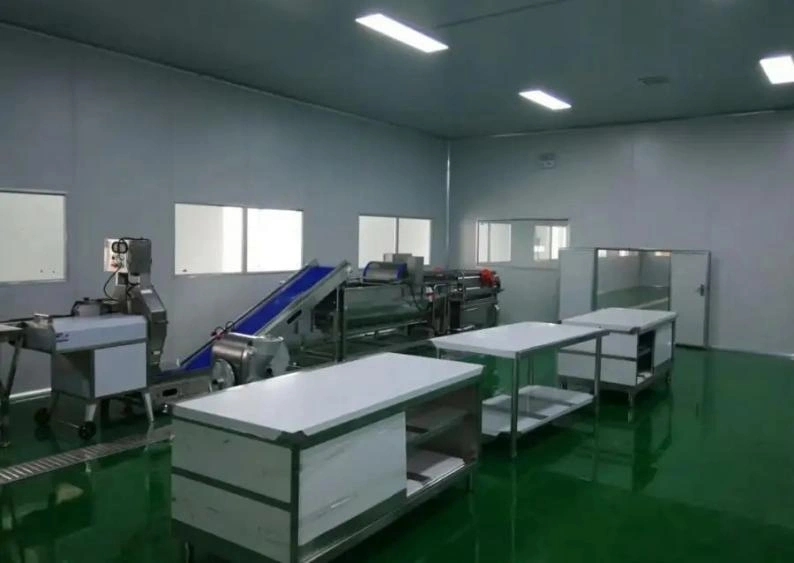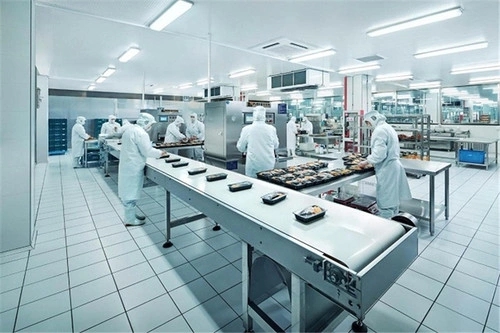The Invisible Threat at the Turn of Spring and Summer

As temperatures rise, American food processing plants are facing a severe challenge - mold contamination. These microorganisms with a diameter of less than 1 mm can contaminate 10 square feet of equipment surface (about 0.9㎡) within 24 hours, and some molds can even produce carcinogens such as aflatoxin. According to FDA statistics, food recalls caused by mold contamination account for 23% of the total annual total, with direct economic losses exceeding $1.5 billion.
1. Why is mold so difficult to eradicate? Analysis of three survival strategies
(I) Spores: Nature's "Indestructible Body"
Mold spores have:
High temperature resistance: can withstand 248°F (about 120℃)
Chemical resistance: 75% alcohol solution cannot effectively kill
Extreme environment survival: hibernate for several years in dry desert conditions
(II) Exponential reproduction rate
At 86°F (30℃) and 70% relative humidity:
A generation of Aspergillus niger every 24 hours
Can cover 100 square feet of surface (about 9.3㎡) in 72 hours
Case: A California meat processing plant delayed the cleaning of the conveyor belt by 2 hours, resulting in mold contamination of the entire production line

(III) Three-dimensional transmission network
Main transmission routes:
Air transmission: A sneeze can spread 5,000 spores to 215 square feet of space
Contact transmission: Contaminated gloves touching 10 devices can contaminate 80% of the production line
Water source transmission: Condensate pipes can allow spores to spread to the entire workshop within 3 days
II. Environmental control: Three core measures to establish a mold "forbidden zone"
(I) Precise management of temperature and humidity
Key parameters:
Danger zone: >75°F (24℃) and humidity >55%
Solution:
Install an industrial-grade dehumidification system (humidity error ±1%)
Deploy dew point sensors in key areas
Forced every 2 hours Ventilation (air exchange volume ≥ 20 times/hour)
(II) Triple protection of air purification
Fresh air system: H13 HEPA filter (filtration efficiency 99.97%)
Use chlorine dioxide atomization disinfection after daily production (concentration 50-100ppm)
Set up laminar flow hoods (class 100 cleanliness) at key workstations

(III) Deep cleaning plan
"Dry and wet separation" cleaning process:
Dry cleaning: Use HEPA vacuum cleaner (broom prohibited)
Wet cleaning: 176°F (80℃) hot alkaline water scrubbing
Weekly deep cleaning:
High-pressure steam cleaning (212°F/100℃)
Sewer chlorine dioxide bubble Foam treatment (concentration 100ppm, 30 minutes soaking)
III. Chemical disinfection: Chlorine dioxide "special forces" program
(I) Advantages of chlorine dioxide disinfectant
Broad-spectrum sterilization: 99.7% effective against 18 types of mold spores
No residue: decomposed into oxygen and chloride ions
Strong permeability: can penetrate biofilm
Safety: EPA registered food contact grade disinfectant
(II) Application scenarios and concentrations
Application scenarios Recommended concentration Contact time Notes Food contact surface 50ppm 5 minutes pH value needs to be adjusted to 6.5-7.5 before use Air and pipes 100ppm 15 minutes Need to be used with atomization equipment Ground and 200ppm on the wall for 10 minutes, wear nitrile gloves to operate

(III) Rotational use plan
Odd months: chlorine dioxide on Monday, Wednesday and Friday/quaternary ammonium salt on Tuesday, Thursday and Saturday
Even months: chlorine dioxide daily + silver ion hydrogen peroxide on weekends
Monthly residual test (in line with EPA standards)
IV. Physical killing: "double kill tactics" of high temperature + ultraviolet rays

(I) Thermal sterilization
132°C saturated steam treatment equipment for 30 minutes per week (FDA standard)
Immediately dry with 80°C hot air after cleaning (humidity drops below 15%)
(II) Ultraviolet protection
Nighttime automatic cruise ultraviolet car (with human body sensing device)
UV-C LED modules are embedded in key equipment such as conveyor belts
Actual results: The number of colonies in the filling workshop of a dairy company decreased by 89%
V. Equipment and raw materials: Building a "firewall" from the source
(I) Four principles for equipment transformation
Zero dead angle design (arc welding process)
Key component silver ion nano coating (antibacterial rate ≥ 99%)
Automatic CIP cleaning system (55°C, 2% alkali solution)
Condensate sealing recovery system

(II) Five checkpoints for raw material control
Factory inspection: ATP fluorescence detector (results in 5 minutes)
Microwave pretreatment of grain raw materials (2450MHz)
Intelligent silo environmental control (15°C/45% humidity)
ERP system first-in-first-out management
Supplier fuse mechanism
VI. Personnel management: the last line of defense

(I) Three-level prevention and control system
Entry checkpoint: air shower room + electrostatic adsorption ( Dust removal efficiency 99.8%)
Operation: antibacterial gloves + alcohol disinfection (reminder every 30 minutes)
Supervision: AI behavior recognition system (real-time monitoring)
(II) Immersive training
VR simulated pollution scene
Fluorescent tracer experiment
Quarterly emergency drill (complete workshop disinfection within 2 hours)
VII. Intelligent monitoring: 24-hour "electronic sentinel"

(I) Internet of Things monitoring system
Spore capture instrument (sampling every 4 hours, AI identifies 18 types of mold)
200 temperature and humidity monitoring points
Surface contact dish automatic cultivation (48-hour colony map)
(II) Blockchain traceability
Disinfection record chain storage
5-minute pollution traceability positioning
Recall efficiency increased by 90%
Important reminder: Chlorine dioxide disinfectant requires professional operation, it is recommended to contact the US EPA certified supplier for technical support.